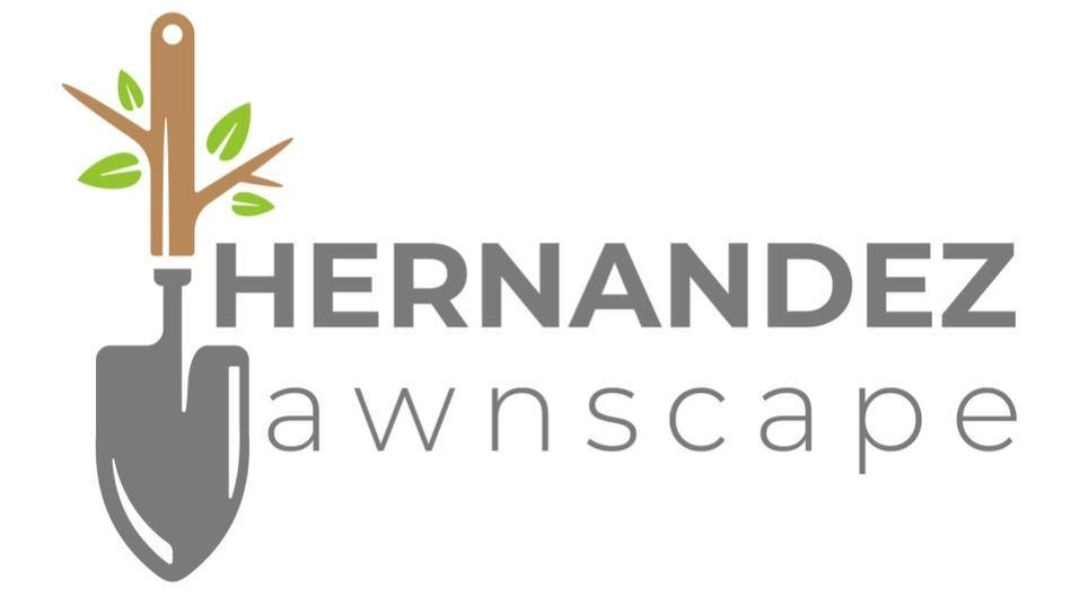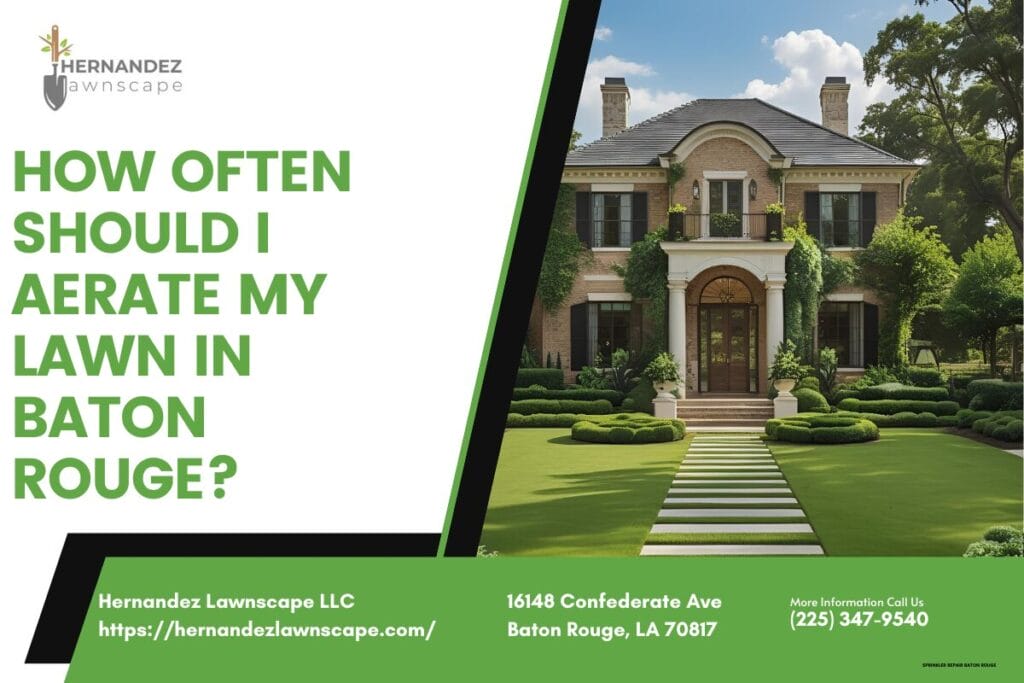For most lawns in Baton Rouge, you should aerate not on a fixed annual schedule, but when your lawn shows clear signs of soil compaction. This symptom-driven approach, typically needed every 1-2 years, is far more effective for our unique combination of heavy clay soil and intense seasonal rainfall. The ideal time to perform this service is during the active growing season of late spring to early summer.
Here at Hernandez Lawnscape, after two decades of servicing lawns from the Garden District to the subdivisions near Shenandoah, I’ve seen a common mistake homeowners make. They treat lawn aeration like changing a smoke detector battery—a task to be checked off the calendar once a year. While the intention is good, this approach simply doesn’t work for the challenging conditions we face in Baton Rouge. A rigid schedule often leads to aerating when it isn’t needed or, worse, missing the critical window when your lawn is gasping for air.
The truth is, your lawn communicates. It sends out distress signals when it’s suffocating. Our job, as stewards of our landscape, is to learn its language. This guide will teach you how to read those signs, transforming aeration from a routine chore into a precise, powerful remedy for your specific yard.
The ‘Baton Rouge Compaction Triad’: Our Unique Challenge
To understand why a calendar-based plan fails, you have to understand our local environment. Lawns here don’t just face one issue; they battle a trifecta of compounding problems I call the “Baton Rouge Compaction Triad.”
- Heavy Clay Soil: It’s no secret that our region is built on dense earth. Louisiana soils, especially the alluvial soils of south Louisiana, have a high clay content, which makes them prone to compaction. The tiny particles in clay soil pack together tightly, squeezing out the porous spaces that roots, water, and essential nutrients need to thrive.
- Torrential Downpours: We love our lush, green surroundings, but they come at a price. Baton Rouge gets 63 inches of rain, on average, per year, significantly higher than the US average of 38 inches. These intense rain events hammer the soil surface, further compacting the clay and creating a near-impenetrable crust. This is why you see water sheeting off your yard and into the street instead of soaking in.
- High Humidity: Our famous humidity does more than make summers sticky. It slows evaporation, keeping the heavy clay soil saturated for longer periods. This water-logged state prevents the ground from naturally drying and cracking, which would otherwise provide some minor, temporary relief from compaction.
This triad creates a perfect storm where lawns suffocate much faster than in other regions. Trying to fix it with a “one-size-fits-all” annual lawn aeration plan is like putting a bandage on a problem that needs surgery.
Beyond the Calendar: Your Lawn’s SOS Signals
So, when to aerate lawn in Baton Rouge? The answer lies in observation, not the date. Your yard will tell you exactly when it needs help. Here is an actionable checklist of the most common signs of soil compaction in Baton Rouge lawns.
How to Tell if Your Baton Rouge Lawn Needs Aerating:
- The Screwdriver Test: This is the simplest diagnostic tool. Take a standard screwdriver and try to push it into your lawn’s soil. If you meet significant resistance and can’t easily push it in several inches, your ground is likely compacted. Signs that a lawn in Baton Rouge may be compacted include difficulty pushing a screwdriver into the ground.
- Water Runoff or Pooling: After a typical summer downpour, does water run off your lawn like it’s a paved driveway? Or do you have areas of standing water that take hours to disappear? This is a classic sign that water can’t penetrate the compacted soil, a critical issue for improving lawn drainage in Baton Rouge.
- Thinning or Stressed Grass: Is your St. Augustine or Centipede grass looking thin, patchy, or developing brown spots despite proper watering and fertilizing? This often happens in high-traffic areas—the path to the grill, the kids’ play area, or where the dog runs. Compacted soil physically restricts lawn aeration for healthier root growth, starving the grass.
- Excessive Thatch Buildup: Thatch is the layer of dead and living shoots, stems, and roots that accumulates between the soil surface and the green grass blades. A layer thicker than half an inch can act like a barrier, blocking air and water. Core aeration is one of the best methods for reducing thatch buildup in southern grasses.
Calendar vs. Condition: A Better Approach for Baton Rouge
Understanding these signals highlights the flaw in a rigid schedule. While an annual plan might seem proactive, it can be inefficient and even counterproductive. What if your lawn, due to low traffic and good drainage, only needs aeration every two years? You’ve wasted time and money. Conversely, what if your yard is on a new construction lot with heavily compacted builder’s fill? If a lawn is planted in clay-heavy soil or is in a high-traffic area, it may need to be aerated as often as twice a year, not just on a single fixed schedule. A single aeration might not be enough.
This leads to the question: can you aerate a lawn too often? Absolutely. Performing a core aeration when the soil isn’t compacted or when the grass is dormant or stressed by drought can cause unnecessary damage, opening up the turf to weed invasion without providing any real benefit.
Timing is Everything: The Baton Rouge Aeration Window
Once you’ve identified the SOS signals, the next step is timing the service for peak recovery. For our warm-season grasses like St. Augustine, Zoysia, Centipede, and Bermuda, this is non-negotiable.
The best time to aerate lawn in South Louisiana is during the active growing season. For warm-season grasses, common in southern lawns like those in Baton Rouge, the best time for aerating is during the active growing season of late spring or very early summer. We target the period from May through early July. During this time, your grass is growing aggressively and will rapidly heal and spread into the openings created by the aerator, choking out potential weeds.
This brings up a frequent question: “Is October too late to aerate a lawn in Baton Rouge?” For our types of grass, yes, it generally is. Aerating in the fall as the grass heads into dormancy is a mistake. The recovery will be slow to non-existent, and the holes you punch can become perfect germination spots for winter weeds like poa annua and clover. This is why professional lawn treatment in Baton Rouge must be timed to the grass type, not a generic national schedule.
Proper timing is one of those details that separates acceptable results from fantastic ones. As one of our clients mentioned, “I could not be more pleased with Hernandez Lawnscape. Excellent service all around…5 stars!” We believe that excellence comes from doing the right thing at precisely the right time.
The Right Tool for Our Soil: Why ‘Pulling a Plug’ is Non-Negotiable
Not all aeration is created equal. When you look at aerator rental in Baton Rouge or consider DIY lawn aeration, you’ll encounter two main types: spike aerators and core aerators.
- Spike Aerators: These simply poke holes in the ground using solid tines. For our heavy clay soil, this is the worst thing you can do. Instead of relieving compaction, it actually presses the soil particles tighter together around the hole, a phenomenon known as “smearing.” It makes the problem worse.
- Core Aerators (or Plug Aerators): This is the only truly effective method for our region. What is lawn aerification with this tool? It uses hollow tines to physically pull 2- to 3-inch-deep plugs of soil out of the lawn and deposit them on the surface. This is the gold standard for lawn maintenance for compacted soil.
The benefits of core aeration are immediate and profound. It creates channels for air, water, and nutrients to reach the root zone, promotes deeper root growth, and helps break down thatch. It is the definitive answer for what type of aerator is best for Louisiana soil.
Aftercare: Maximizing Results After Aerating Your Lawn
The work isn’t over once the last plug is pulled. Proper aftercare ensures you get the most from the service.
- Watering: Begin a consistent watering schedule after aeration. The newly opened channels will allow water to penetrate deeper than ever before, encouraging roots to follow.
- Fertilizing: Applying fertilizer after aerating your Baton Rouge lawn is a fantastic strategy. The nutrients have a direct path to the roots, dramatically improving fertilizer uptake and effectiveness.
- Top Dressing/Overseeding: While less common for St. Augustine, applying a thin layer of compost or topsoil after aeration can improve soil structure. For Bermuda or Zoysia lawns, this is also the ideal time for overseeding to fill in thin areas.
Making the Right Choice for Your Needs
Ultimately, deciding on an aeration strategy depends on your lawn’s condition and your goals as a homeowner. There isn’t one universal answer, but we can guide you to the right approach for your residence.
For the ‘Problem-Solver’ Homeowner:
You’re the one actively noticing the water pooling near the driveway or the thinning grass where the kids play. Trust your instincts. Use the SOS signal checklist in this guide. Your hands-on approach is perfect for symptom-driven aeration. Wait until you see the signs, then act decisively within the late spring/early summer window for a targeted, effective solution.
For the ‘By-the-Book’ Homeowner:
You appreciate a good schedule and proactive maintenance, and that’s commendable. The key is to adapt that schedule to our local reality. Instead of marking “Aerate Lawn” on your calendar for the first week of May every year, mark it as “Assess Lawn for Aeration.” Go out with a screwdriver and walk the yard after a rain. Let the lawn’s condition, not the calendar page, dictate the action. This shifts you from a rigid routine to an informed, responsive one.
For the ‘Hands-Off Delegator’:
You want a beautiful lawn without having to become a soil scientist. Your time is valuable, and you prefer to entrust your landscape to a proven professional. For you, the best choice is to partner with a local expert who lives and breathes Baton Rouge lawn care.
A good company won’t just sell you a service; they will diagnose your lawn’s specific needs and build a tailored plan. They do the assessment for you. As another customer kindly put it, “They always go a step beyond what I expect and consistently provide excellent service. Mr. Hernandez is honest and trustworthy…” That trust is what you should look for in a lawn care partner.
The health of your Baton Rouge lawn is a direct reflection of the ground it grows in. By moving beyond a generic calendar and learning to respond to your lawn’s specific needs, you can ensure it gets the air, water, and nutrients it needs to thrive through our hot summers and wet seasons. At Hernandez Lawnscape, we build our entire lawn care philosophy around this diagnostic approach. If you’re ready for a tailored solution that gets real results, contact our expert team today for a free, no-obligation lawn assessment and quote.





